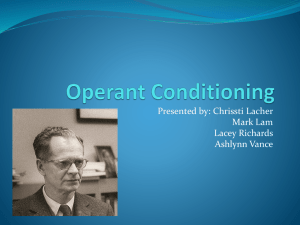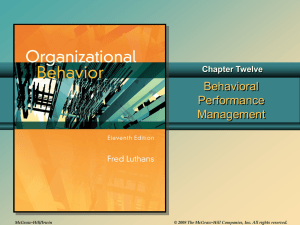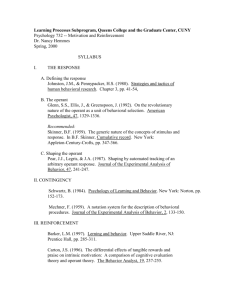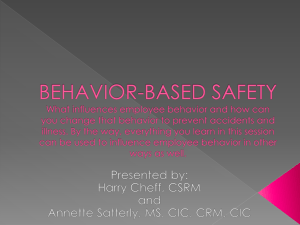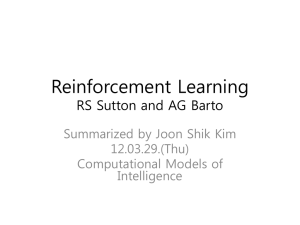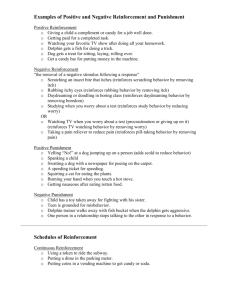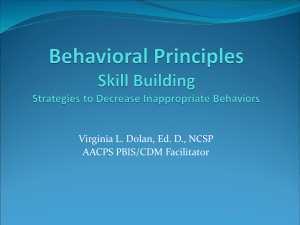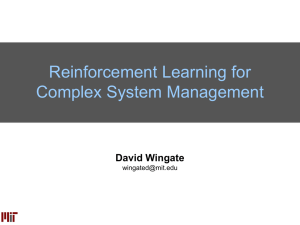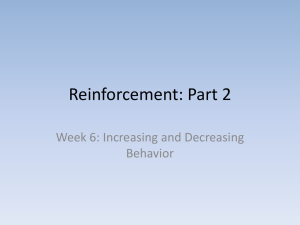Behavioral Function ppt
advertisement
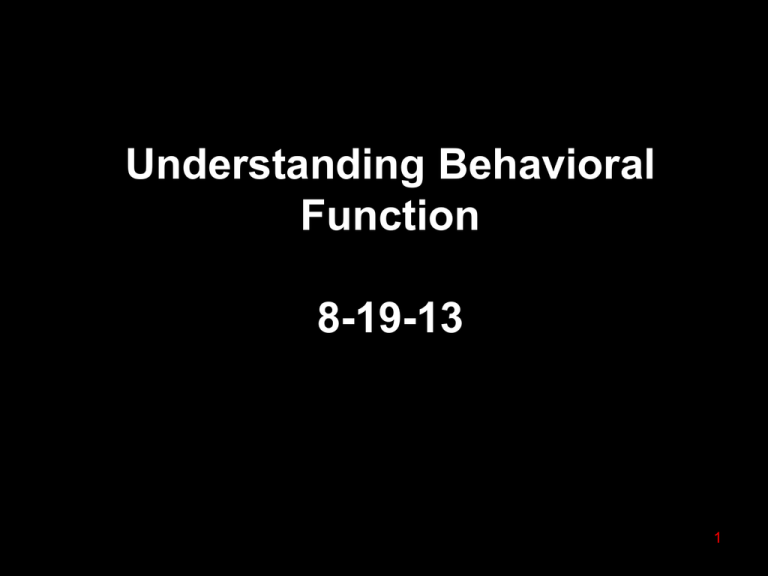
Understanding Behavioral Function 8-19-13 1 • Think about behaviors you typically engage in and WHY you engage in them. • What do you “get out of” the behavior? • Why do you repeat the behavior? • What events might result in you not repeating the behavior? 2 Focus on What We Can Do (environment) • Explain the relationship of human behavior to immediate environmental events • Help explain: • The way behavior functions • The environmental factors that influence it • How to use this information to design interventions 3 About Challenging Behavior(s) Demchak & Bossert (1996) • Behaviors… • Serve a specific purpose or function for the individual • Have communicative intent • Are directly related to events in the environment that influence or reinforce such behaviors • A single challenging behavior can serve multiple functions 4 Principles of ABA (Glenn Latham, Ph.D.) 1. Behavior is largely a product of its immediate environment. 2. Behavior is shaped/ maintained by consequences. 3. Behavior is shaped better by positive (reinforcement) than negative (punitive) consequences. 4. Past behavior is the best predictor of future behavior. 5. Whether a behavior has been punished or reinforced is known only by the course of that behavior in the future. 5 Consequences can affect behavior in three ways: • Strengthen—increase the frequency or likelihood that the behavior will occur • Weaken—decrease the frequency or likelihood that the behavior will occur • Maintain—do not change the frequency or likelihood that the behavior will occur • Neutral consequences have no effect on the behavior 6 Reinforcement • Basic and pervasive principle of behavior • “Positive” and “negative” do not mean “good” and “bad” • Positive refers to addition of (+) events or stimuli • Negative refers to removal of (-) events or stimul • Both always result in an increase in the future frequency of a behavior (reinforcement) • Negative reinforcement is not punishment 7 Reinforcement Defined • Positive Reinforcement • Presentation of a stimulus, behavior occurs more often in the future • Negative Reinforcement • Termination of certain stimuli, future probability of a behavior is increased 8 Examples of SR+/• You are standing outside when it begins to storm. You see a taxi without passengers and you hail the taxi, which stops to pick you up. Once inside the taxi you are no longer cold and wet. Your behavior of hailing a cab is maintained by…. 9 10 Elements of Behavioral Support • Function-based • Prevention (antecedent manipulations) • Comprehensive intervention • Multiple elements • Person-centered planning • Systems change • Intervention at “whole school” level Horner, District Implementation of Effective Practices: www.pbis.org) 11 Behavior Support • Behavior Support Plans (PBSP’s): • ANALYZE • PREVENT • TEACH • REINFORCE • Use “Natural Consequences” where needed as part of overall teaching approach to problems Grau (2008) 12 Sources of Reinforcement for Problem Behavior • Positive Reinforcement • Social (attention, access to tangible materials) • Automatic (sensory stimulation) • Negative Reinforcement • Social (escape from task demands) • Automatic (pain attenuation) Iwata, 2009 13 Maintaining Consequences Problem behavior Get object/activity/ Sensation (SR+) Avoid object/activity/ Sensation (SR-) Social/object or activity/ physiological Social/object or activity/ physiological www.pbis.org 14 Defining Antecedents & Consequences Antecedent events – • What happens immediately before the behavior Consequent Events – • What happens immediately following the behavior • May be programmed or naturally occurring (does not imply punishment) 15 Sample Problematic Antecedents Materials too complex / difficult Curriculum lacking in appropriate adaptations Student has lack of functional vocabulary to communicate Meaningless repetition beyond criterion (understimulation) Nonfunctional activity Pacing too slow / too fast Physical environment: For example, number of students, noise Rate of physical prompting or verbalizations Alberto & Troutman Applied Behavior Analysis for Teachers, 7e 16 Examples of Common Classroom Consequences • • • • • • Praise Reprimands / corrective feedback Change of activity, peers, seating Awards Time-out / removal Redirection JGCP-U of Kansas 17 Probable Functions of Specific Behavior Disorders Behavior Disorder Aggression Positive Reinforcement Social Automatic + Ø Negative Reinforcement Social Automatic + Ø Tantrums + Ø + Ø Noncompliance + Ø + Ø Property Destruction + ? + Ø "Stereotypies" ? + ? ? SIB + + + + 18 Iwata, 2009 References • Alberto & Troutman (2006, 2009). Applied Behavior Analysis for Teachers. • Durand, V.M. (1988). The Motivation Assessment Scale. In M. Hersen & A.S. Bellack (Eds.), Dictionary of behavioral assessment techniques. New York: Pergamon Press. • Fox, J., Hales, C., & Blevins, L. (2001).Challenges in Developing Interventions for Persons with Behavior Challenges in Schools and Other Applied Settings: Functional Behavior Assessment to Effective Intervention. Presentation at Tennessee Association for Behavior Analysis - October 13, 2001. • Grau (2008). The Nuts and Bolts of FBA’s. Retrieved October 13, 2008 from http://www.cqcapd.state.ny.us/Presentations/FBAsAlbLaw5-9-08 19 References • Horner, R. District Implementation of Effective Practices: Using and RTI Model to Implement Functional Behavioral Assessment. Retrieved September 2008 from www.pbis.org. • Iwata, B. (2009). Pennstate Autism Conference • Kerr & Nelson (2006). Strategies For Addressing Behavior Problems in the Classroom. • Lewis, Scott, & Sugai (1994). Problem Behavior Questionnaire. • O’Neill, R.E., Horner, R. H., Albin, R. W., Sprague, J. R., Storey, K., & Newton, J. S. (1997). Functional Assessment and Program Development for Problem Behavior. Pacific Grove, CA: Brooks/Cole Publishing. 20 References • OSEP PBIS site – www.pbis.org • PATTAN www.pattan.k12.pa.us • Sugai, G., Lewis-Palmer, T., & Hagan-Burke, S. (19992000). Overview of the functional behavioral assessment process. Exceptionality, 8, 149-160. 21

